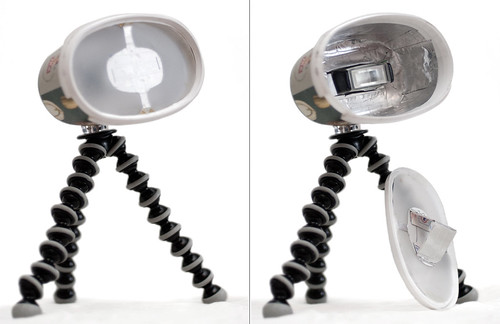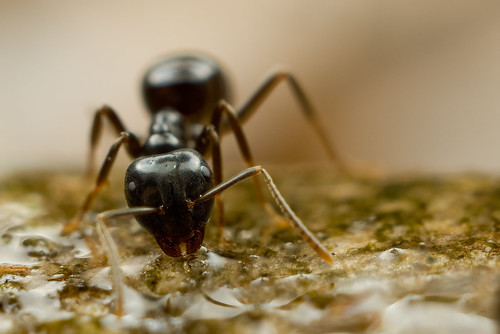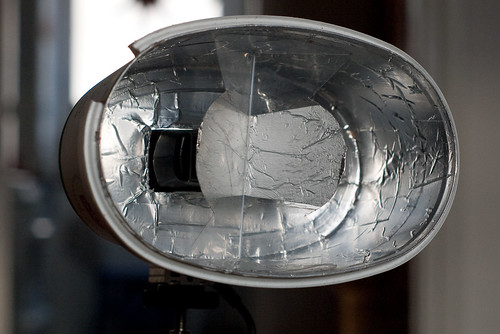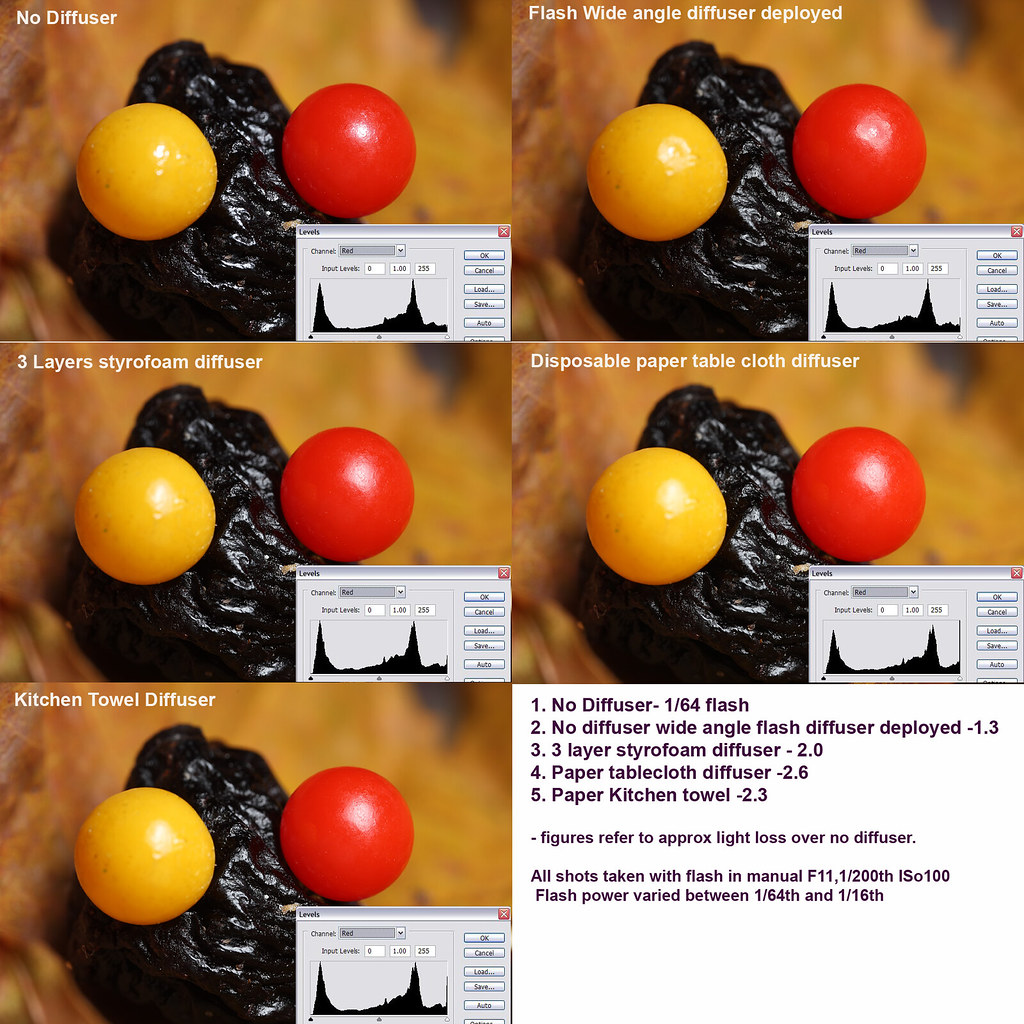The first incarnation of this diffuser looked like this:

A plastic ice-cream container, lined with reflective aluminum tape and most importantly: a modified lid with a reflector at the center, right in front of the flash head.
I've later learned that similar diffuser designs are used in portrait/fashion photography where they are called "Beauty dish diffusers" (do a search and you'll find a lot of DIY-projects)
But I got the idea for this when I was at the dentist looking up at the dentist's lamp trying to keep my mind on something other than what was going on at the moment. It struck me that the design of their lamps not only prevents the patient from being blinded by the very bright light but it also softens the reflections on the teeth since the central part is blocked by a small reflector.
At this point I must have tried at least 50 different diffuser materials and designs and I was constantly changing things to improve it. I wanted something that:
1) provided good light diffusion
2) wasn't too light hungry (draining the flash batteries)
3) was light and small enough to not be in the way in the field
4) was durable enought to withstand being lugged around in thick vegetation and being exposed to wind, rain, sun etc.
5) was easy to mount and unmount from the flash
The design above met these criteria better than anything else I'd tried so far and I was quite happy with it. I soon found room for improvement though: when shooting shiny subjects the blocked out central part left a very distinctive highlight footprint that could be annoying (see below)

In this shot of a Lasius fuliginosus ("Jet black ant") drinking sap the diffuser pattern on the head becomes disturbing.
So I tried different ways to get around this – I perforated the triangular central reflector with small holes to let some of the light pass trough, I replaced the central reflector with a thin piece of styrofoam and so on...
The best solution turned out to be moving the triangular reflector back closer towards the flash, allowing light to bounce back in front of it before exiting the diffuser (passing through a very thin (<1mm) layer of white styrofoam (glued onto a transparent sheet of plastic for durability).


My current version of the diffuser (lid removed in the upper one to better show the design)
As you hopefully can make out from the pics, I've made the triangular reflector out of a folded piece of transparent plastic attached to the upper and lower walls of the ice-cream container. The central portion of this piece of plastic is covered with aluminum tape. I've used the same container as in my original version since I find it ideal in size and the (almost) elliptical footprint is perfect for me – the round shape gives much more natural looking highlight reflections (than a rectangular one) and for the same amount of light "spread" (i.e. maximum width/radius of the diffuser) an elliptical diffuser is much smaller and easier to position than a circular one AND it is closer to the original proportions of the flash head which makes it easier to spread the light evenly in the diffuser.
Here is what it looks like when you fire it (shot with a 28mm lens from approximately 30cm away):

As you can see from the histogram nothing is blown out in this image which means no area is considerably brighter than it looks (which is easily the case when you take this kind of shot). Most importantly – the brightest parts are towards the edges which is where you want them to be. Not only is the central part closer to the subject and should be less bright for that reason – it is also the light from the central part that is most responsible for creating shadows beneath the subject whereas the light coming from the edges of the diffuser has the reverse effect and hence should be slightly brighter than the rest.
Ok, so this became a lengthy post on a rather simple design but I've found that sometimes when you do this people are more likely to come up with bright ideas on how to improve things further!
/John

